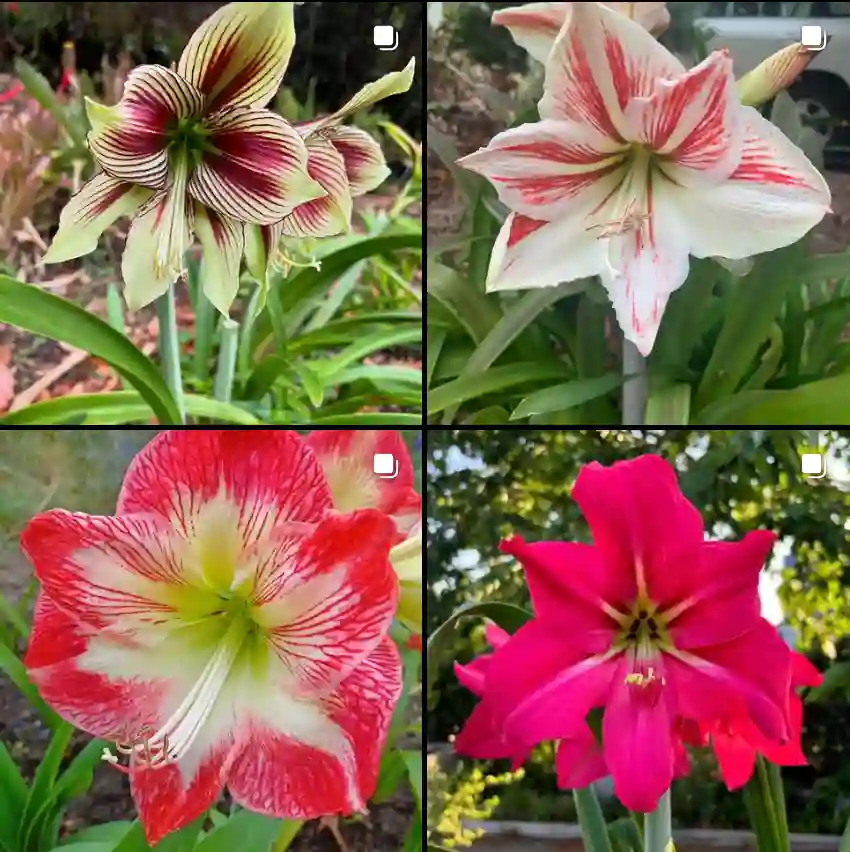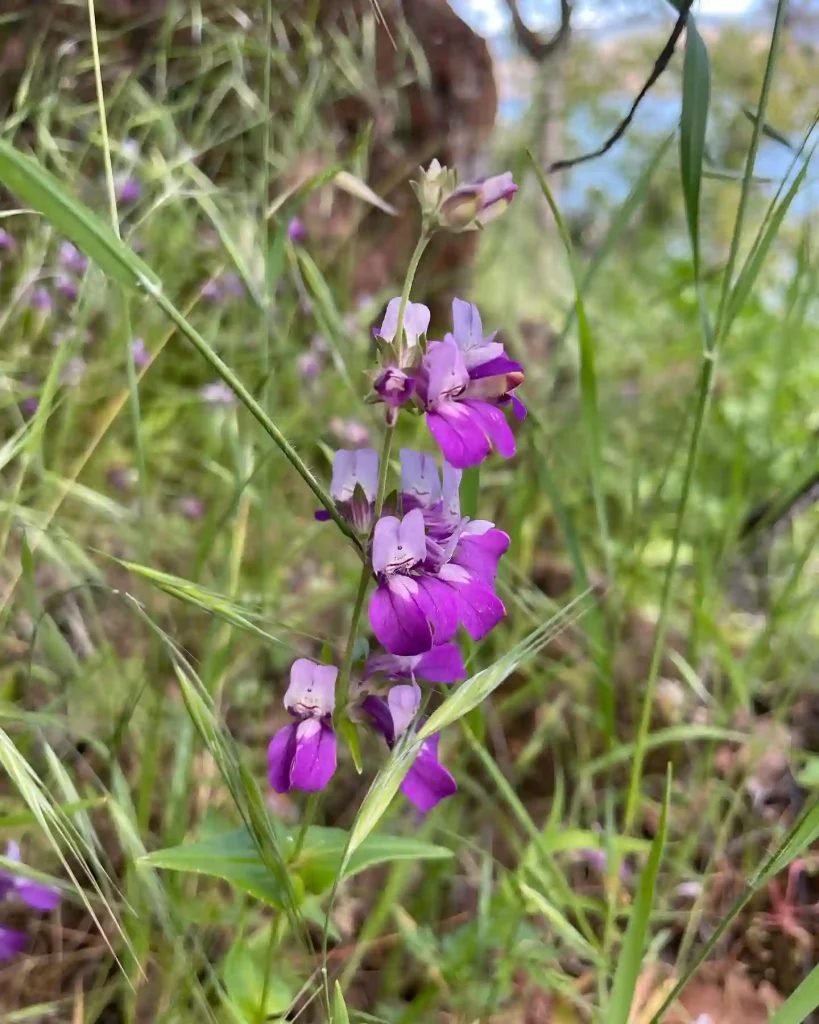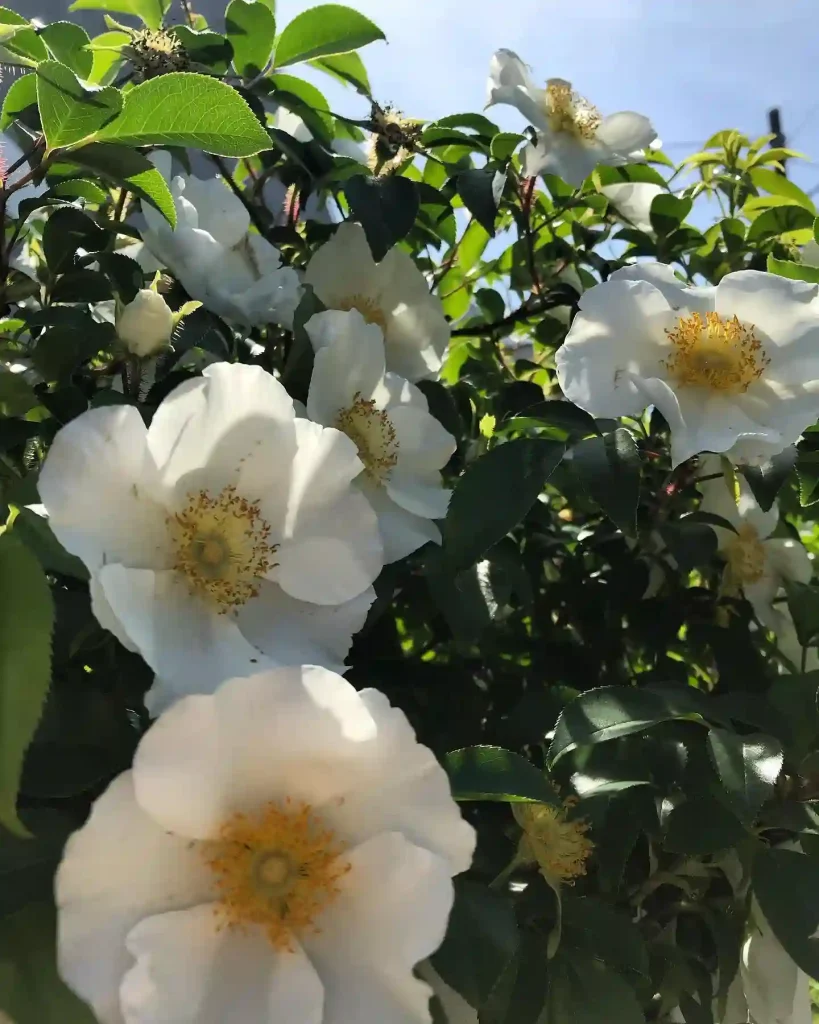My Fascination with the Inga Genus
I’m Ferb Vu, and I’ve always been drawn to the natural world. From the towering redwoods of California to the delicate orchids of Vietnam, the diversity of plant life never ceases to amaze me. Lately, though, I’ve become particularly interested in a genus of tropical trees known as Inga. These fascinating plants, with their unique foliage and vibrant flowers, play a vital role in their ecosystems, and they hold a special appeal for me.
What Makes Inga Unique?
Inga is a large genus belonging to the legume family, Fabaceae. They are predominantly found in the tropical regions of the Americas, from Mexico down to Argentina. What sets them apart are their distinctive leaves and flowers. The leaves are pinnate, meaning they consist of multiple leaflets arranged on either side of a central stem. Often, these leaves have winged stems or nectar glands between the leaflets, adding to their visual interest.
The flowers of Inga species are equally captivating. They typically appear in dense clusters and boast numerous long, white or cream-colored stamens, giving them a fluffy, almost firework-like appearance. These showy flowers attract a variety of pollinators, including bees, butterflies, and even bats.
But Inga trees offer more than just aesthetic appeal. They are also nitrogen-fixing plants. This means they have a symbiotic relationship with bacteria in the soil that allows them to convert atmospheric nitrogen into a usable form. This process enriches the soil, benefiting not only the Inga trees themselves but also other plants growing nearby. This makes them crucial components of their ecosystems and potentially valuable allies in sustainable agriculture.
A Diverse Genus
The genus Inga is remarkably diverse, with an estimated 283 species. This incredible variety is a testament to the adaptability of these trees and their ability to thrive in a range of habitats, from rainforests to savannas. Here are just a few examples of the many fascinating species:
- Inga acicularis T.D.Penn.
- Inga acreana Harms
- Inga acrocephala Steud.
- Inga acuminata Benth.
- Inga adenophylla Pittier
- Inga affinis DC.
- Inga alata Benoist
- Inga alba (Sw.) Willd.
- Inga aliena J.F.Macbr.
- Inga allenii J.León
- Inga amboroensis T.D.Penn.
- Inga andersonii McVaugh
- Inga appendiculata M.Sousa
- Inga approximata T.D.Penn.
- Inga aptera (Vinha) T.D.Penn.
- Inga arenicola T.D.Penn.
- Inga augusti Harms
- Inga auristellae Harms
- Inga balsapambensis T.D.Penn.
- Inga barbata Benth.
- Inga barbourii Standl.
- Inga belizensis Standl.
- Inga bella M.Sousa
- Inga bicoloriflora Ducke
- Inga bifoliolata D.B.O.S.Cardoso & Amorim
- Inga bijuga Schery
- Inga blanchetiana Benth.
- Inga bollandii Sprague & Sandwith
- Inga bourgoni (Aubl.) DC.
- Inga brachyrhachis Harms
- Inga brachystachys Ducke
- Inga bracteifera N.Zamora & T.D.Penn.
- Inga brevipes Benth.
- Inga bullata Benth.
- Inga bullatorugosa Ducke
- Inga cabelo T.D.Penn.
- Inga cabrerae M.Sousa
- Inga calantha Ducke
- Inga calanthoides Amshoff
- Inga calcicola M.Sousa
- Inga calderonii Standl.
- Inga canonegrensis N.Zamora & T.D.Penn.
- Inga capitata Desv.
- Inga cardozana L.Cárdenas
- Inga carinata T.D.Penn.
- Inga caudata Killip
- Inga cayennensis Sagot ex Benth.
- Inga cecropietorum Ducke
- Inga chartacea Poepp.
- Inga chiapensis Miranda ex M.Sousa
- Inga chocoensis Killip ex T.S.Elias
- Inga chrysantha Ducke
- Inga ciatiformis J.M.Fern. & F.C.P.Garcia
- Inga ciliata C.Presl
- Inga cinnamomea Spruce ex Benth.
- Inga cocleensis Pittier
- Inga coleyana M.J.Endara & J.E.Guevara
- Inga colimana Padilla, Cuevas & Solís
- Inga colombiana C.Romero
- Inga conchifolia L.P.Queiroz
- Inga congesta T.D.Penn.
- Inga cookii Pittier
- Inga coragypsea L.Uribe
- Inga cordatoalata Ducke
- Inga cordistipula Mart.
- Inga coruscans Humb. & Bonpl. ex Willd.
- Inga crassiflora Ducke
- Inga cuspidata M.Sousa
- Inga cylindrica (Vell.) Mart.
- Inga cynometrifolia Harms
- Inga dasycarpa M.Sousa
- Inga davidsei M.Sousa
- Inga densiflora Benth.
- Inga disticha Benth.
- Inga dominicensis Benth.
- Inga duckei Huber
- Inga dwyeri M.Sousa
- Inga edulis Mart.
- Inga edwallii (Harms) T.D.Penn.
- Inga enterolobioides T.D.Penn.
- Inga exalata T.S.Elias
- Inga exfoliata T.D.Penn. & F.C.P.García
- Inga exilis T.D.Penn.
- Inga expansa Rusby
- Inga extra-nodis T.D.Penn.
- Inga fanchoniana Poncy
- Inga fastuosa (Jacq.) Willd.
- Inga fendleriana Benth.
- Inga feuillei DC. Plant FAQs: Ice Cream Bean – Inga Feuillei
- Inga filiformis N.Zamora
- Inga flagelliformis (Vell.) Mart.
- Inga flexuosa Schltdl.
- Inga fosteriana T.D.Penn.
- Inga gereauana (Pipoly & R.Vásquez) T.D.Penn.
- Inga globularis T.D.Penn.
- Inga glomeriflora Ducke
- Inga goldmanii Pittier
- Inga golfodulcensis N.Zamora
- Inga goniocalyx Britton & Killip
- Inga graciliflora Benth.
- Inga gracilifolia Ducke
- Inga gracilior Sprague
- Inga grandis T.D.Penn.
- Inga grazielae (Vinha) T.D.Penn.
- Inga hayesii Benth.
- Inga herrerae N.Zamora
- Inga heterophylla Willd.
- Inga hispida Schott ex Benth.
- Inga huastecana M.Sousa
- Inga huberi Ducke
- Inga ilta T.D.Penn.
- Inga inflata Ducke
- Inga ingoides (Rich.) Willd.
- Inga inicuil Schltdl. & Cham. ex G.Don
- Inga insignis Kunth
- Inga interfluminensis L.Uribe
- Inga interrupta L.Cárdenas & De Martino
- Inga inundata Ducke
- Inga involucrata R.S.Cowan
- Inga ismaelis M.Sousa
- Inga japurensis T.D.Penn.
- Inga jaunechensis A.H.Gentry
- Inga jefensis Liesner & D’Arcy
- Inga jenmanii Sandwith
- Inga jimenezii N.Zamora
- Inga killipiana J.F.Macbr.
- Inga kursarii M.J.Endara & J.E.Guevara
- Inga lactifera M.Sousa
- Inga lacustris M.Sousa
- Inga laevigata M.Martens & Galeotti
- Inga lallensis Spruce ex Benth.
- Inga lanceifolia Benth.
- Inga lateriflora Miq.
- Inga latipes Pittier
- Inga laurina (Sw.) Willd.
- Inga lenticellata Benth.
- Inga lentiscifolia Benth.
- Inga leonis N.Zamora
- Inga leptantha Benth.
- Inga leptingoides Amshoff
- Inga leptocarpa T.D.Penn.
- Inga lineata Benth.
- Inga litoralis N.Zamora
- Inga lomatophylla (Benth.) Pittier
- Inga longiflora Spruce ex Benth.
- Inga longifoliola R.S.Cowan.
- Inga longipedunculata Ducke
- Inga longipes Benth.
- Inga longispica Standl.
- Inga lopadadenia Harms
- Inga loubryana Poncy
- Inga macarenensis Philipson
- Inga macrantha J.R.Johnst.
- Inga macrophylla Humb. & Bonpl. ex Willd.
- Inga manabiensis T.D.Penn.
- Inga marginata Willd.
- Inga maritima Benth.
- Inga martinicensis C.Presl
- Inga maynensis Benth.
- Inga megalobotrys T.D.Penn.
- Inga megaphylla Poncy & Vester
- Inga meissneriana Miq.
- Inga melinonis Sagot
- Inga mendoncaei Harms
- Inga mexicana (T.D.Penn.) M.Sousa
- Inga micradenia Spruce ex Benth.
- Inga microcalyx Spruce ex Benth.
- Inga microcoma Harms
- Inga micronectarium J.M.Fern., Soares-Lopes & D.R.Silva
- Inga mitaraka Poncy
- Inga mortoniana J.León
- Inga mucuna Walp.
- Inga multicaulis Spruce ex Benth.
- Inga multijuga Benth.
- Inga multinervis T.D.Penn.
- Inga neblinensis L.Cárdenas & De Martino
- Inga nobilis Willd.
- Inga nouragensis Poncy
- Inga nubium Poncy
- Inga obidensis Ducke
- Inga obtusata Spruce ex Benth.
- Inga oerstediana Benth.
- Inga ornata Kunth
- Inga pachyphylla Harms
- Inga pallida Rusby
- Inga panurensis Spruce ex Benth.
- Inga paraensis Ducke
- Inga paterno Harms
- Inga pauciflora Walp. & Duchass.
- Inga peduncularis Benth.
- Inga pedunculata (Vinha) T.D.Penn.
- Inga pellicula T.D.Penn.
- Inga pezizifera Benth.
- Inga pilosula (Rich.) J.F.Macbr.
- Inga pinetorum Pittier
- Inga pitmanii K.G.Dexter & T.D.Penn.
- Inga platyptera Benth.
- Inga pleiogyna T.D.Penn.
- Inga plumifera Spruce ex Benth.
- Inga pluricarpellata T.D.Penn.
- Inga poeppigiana Benth.
- Inga polita Killip
- Inga polyantha Ducke
- Inga porcata T.D.Penn.
- Inga portobellensis Beurl.
- Inga praegnans T.D.Penn.
- Inga pruriens Poepp.
- Inga pseudoinvolucrata M.Sousa
- Inga psittacorum L.Uribe
- Inga punctata Willd.
- Inga retinocarpa Poncy
- Inga rhynchocalyx Sandwith
- Inga rubiginosa (Rich.) DC.
- Inga ruiziana G.Don
- Inga rusbyi Pittier
- Inga saffordiana Pittier
- Inga salicifolia T.D.Penn.
- Inga saltensis Burkart
- Inga samanensis L.Uribe
- Inga santaremnensis Ducke
- Inga sapindoides Willd.
- Inga sarayacuensis T.D.Penn.
- Inga sarmentosa Glaz. ex Harms
- Inga sastreana Acev.-Rodr., S.Carrington & T.D.Penn.
- Inga sellowiana Benth.
- Inga sertulifera DC.
- Inga sessilis Mart.
- Inga setosa G.Don
- Inga sierrae Britton & Killip
- Inga silanchensis T.D.Penn.
- Inga sinacae M.Sousa & Ibarra-Manr.
- Inga skutchii Standl.
- Inga spectabilis (Vahl) Willd.
- Inga spiralis Liesner & D’Arcy
- Inga splendens Willd.
- Inga steinbachii Harms
- Inga stenocalyx Spruce ex Benth.
- Inga stenophylla Standl.
- Inga stenopoda Pittier
- Inga stenoptera Benth.
- Inga stipulacea G.Don
- Inga stipularis DC.
- Inga striata Benth.
- Inga striolata T.D.Penn.
- Inga suaveolens Ducke
- Inga suberosa T.D.Penn.
- Inga subnuda Salzm. ex Benth.
- Inga suborbicularis T.D.Penn.
- Inga tarapotensis Spruce ex Benth.
- Inga tayronaensis T.D.Penn.
- Inga tenuicalyx T.D.Penn.
- Inga tenuiloba N.Zamora & T.D.Penn.
- Inga tenuis (Vell.) Mart.
- Inga tenuistipula Ducke
- Inga teresensis F.C.P.Garcia & A.P.Chagas
- Inga tessmannii Harms
- Inga thibaudiana DC.
- Inga tocacheana D.R.Simpson
- Inga tomentosa Benth.
- Inga tonduzii Donn.Sm.
- Inga tripa F.C.P.Garcia & A.P.Chagas
- Inga ulei Harms
- Inga umbellifera (Vahl) Steud.
- Inga umbilicata (N.Zamora & T.D.Penn.) N.Zamora
- Inga umbratica Poepp.
- Inga unica Barneby & J.W.Grimes
- Inga uraguensis Hook. & Arn.
- Inga urceolata N.Zamora
- Inga ursi Pittier
- Inga velutina Willd.
- Inga venusta Standl.
- Inga vera Willd.
- Inga vestita Benth.
- Inga villosissima Benth.
- Inga virescens Benth.
- Inga virgultosa Desv.
- Inga vismiifolia Poepp.
- Inga vulpina Mart. ex Benth.
- Inga xalapensis Benth.
- Inga xinguensis Ducke
- Inga yacoana J.F.Macbr.
- Inga yasuniana T.D.Penn.
- Inga yungasensis C.Aparicio & A.Fuentes
Why I’m Drawn to Inga
My interest in Inga stems from a deep appreciation for the interconnectedness of nature. These trees exemplify the intricate relationships that exist within ecosystems. They provide food and shelter for wildlife, enrich the soil, and contribute to the overall health of their environment.
Furthermore, I’m intrigued by the potential of Inga to contribute to sustainable agriculture and forestry practices. Their nitrogen-fixing abilities can help improve soil fertility and reduce the need for synthetic fertilizers. They can also be incorporated into agroforestry systems, providing shade for crops and reducing soil erosion.
In a world facing increasing environmental challenges, I believe that understanding and utilizing plants like Inga is more important than ever. They offer valuable lessons in sustainability and resilience, and they hold the potential to help us create a more harmonious relationship with the natural world.
Exploring the World of Inga
I’m eager to continue learning more about the Inga genus. I plan to delve deeper into the scientific literature, connect with researchers and botanists working with these plants, and perhaps even have the opportunity to observe them in their natural habitat.
The world of Inga is vast and full of wonder. I invite you to join me in exploring the beauty, diversity, and ecological significance of these remarkable trees.
If i die, water my plants!



